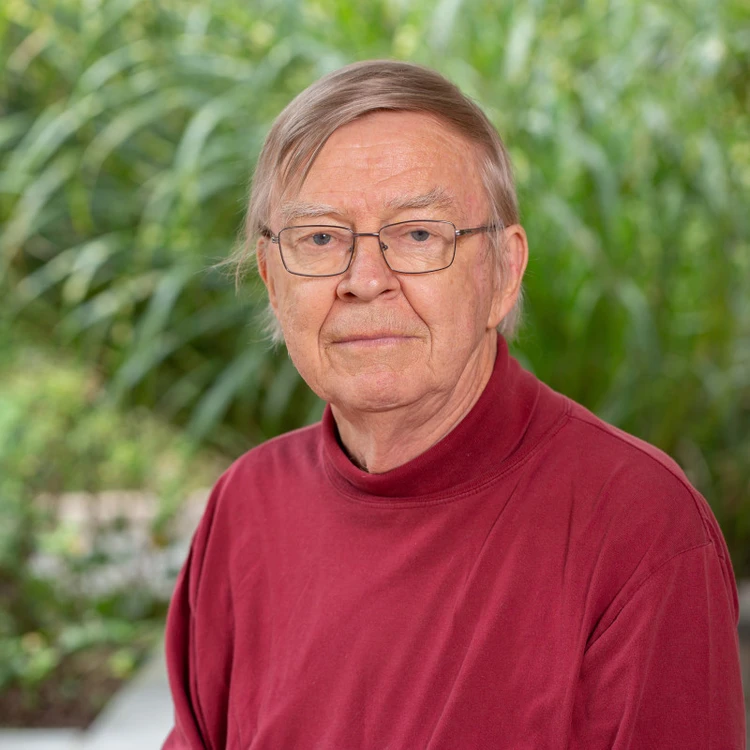Research
Bjorn studies the energy and mass transfer processes in the Earth and terrestrial planets, which involves the melting and crystallization of rock-forming materials at high temperatures and pressures. These processes control materials recycling near convergent plate boundaries, govern lithosphere destruction and formation throughout the Earth’s history, are responsible for volcanic and seismic hazards, and impact on distribution and availability of economic and energy resources inside of the Earth. Characterization of these processes requires an understanding of structure and property relations among silicate melts and water-rich fluids under pressure, temperature, and redox conditions relevant to the mantle and the crust of the Earth.
This portion of Bjorn's research program can be divided into the following subsections:
- Structure of silicate-COH components in and partitioning between melt and fluid with to advance modeling of transport properties and behavior of fluids and melts in the Earth and terrestrial planets
- Equation-of-state and structure of COH fluids and solvent characteristics, at high temperature and pressure.
- Characterization of stable isotope intramolecular partitioning (mostly D/H) and partitioning between minerals, melts, and fluids.
- Fluid structural speciation and isotopologues in hydrothermal environments
Mineral/melt partition coefficients of most elements depend on the composition of both phases. Relationships to crystal composition can be modeled quite precisely on the basis of crystal structure. Significant understanding of silicate melt structure is becoming available. The main compositional variables governing melt structure at ambient or near ambient pressure are the same variables as those affecting the partition coefficients.
Variations in mineral/melt element partition coefficients in natural magmatic systems can be understood via characterization of how melt structure reflects melt compositional variables. For example, the relations between melt structure and olivine/melt partitioning behavior lead to the suggestion that in natural magmatic systems mineral/melt partition coefficients are more dependent on melt composition and, therefore, melt structure the more alkali-rich and the more felsic the melt. Moreover, mineral/melt partition coefficients are more sensitive to melt composition the more highly charged or the smaller their ionic radius of the cation of interest.
Learn moreLabs and Instrumentation
- 2 Bassett-type, externally-heated diamond anvil cells (HDAC to 4 GPa/1000˚C))
- 2 Solid-media, high-pressure apparatus (to 2300˚C/4 GPa)
- 2 MoSi2-heated, 1atm vertical quench furnaces with gas mixing control (to 1650˚C)
- 2 Vertical, MoSi2-heated, 1-atm vertical quench furnaces with ambient atmosphere (to 1650˙)
- 1 MoSi2-heated, 1-atm box furnace (to 1600C)
- 3 Kanthal-heated, 1-atm furnaces (to 1100˚C)
- 2 1-atm strip heaters (to 1700˚C)
- 1 RF-heater (to >2500˚C)
- 1 Petrographic microscope
- 4 Binocular microscopes
- 1 High-precision balance
- Cutting, grinding, polishing, microdrilling, and micropunching equipment
- JASCO IRS-3100 microRaman system
- JASCO IMV-400 microFTIR imager
- Austin Science Mössbauer spectrometer (one equipped for cryogenic measurements to 11 K)
CV
-
B. Sc., University of Oslo, 1969
-
M. A., University of Oslo, 1971
-
Ph. D., The Pennsylvania State University, 1974
- F. W. Clarke Award, Geochemical Society of America, 1977
- Reusch Medal, Norwegian Geological Society, 1979
- George W. Morey Award, Amer. Ceram. Soc., 2006
- Fellow, Mineralogical Society of America
- Geochemistry Fellow, Geochemical Society & European Association of Geochemistry, 2008
- Fellow, Japan Geoscience Union, 2017
- Member, The Royal Norwegian Academy of Science and Letters, 1985
- Original listing – ISI/Thomson Research Highly Cited
- Predoctoral Fellow, Carnegie Institution for Science, 1972-1974
- Carnegie Fellow, Carnegie Institution for Science,, 1974-1977
- Lecturer, Johns Hopkins University, 1975-1977
- Visiting Scientist, Bayerisches Geoinstitut, 1988
- Recherche Associé, CNRS-Orléans, France, 1994
- Visiting Professor, Institut de Physique du Globe, Paris, 2001, 2004
- Visiting professor, Tohoku University, 2011-2015
- Visiting Research Scholar, ISEI, Univ. of Okayama at Misasa, Japan,
- 2006-2009
- Staff Scientist - Earth and Planets Laboratory, Carnegie Institution for Science, 1977-present
